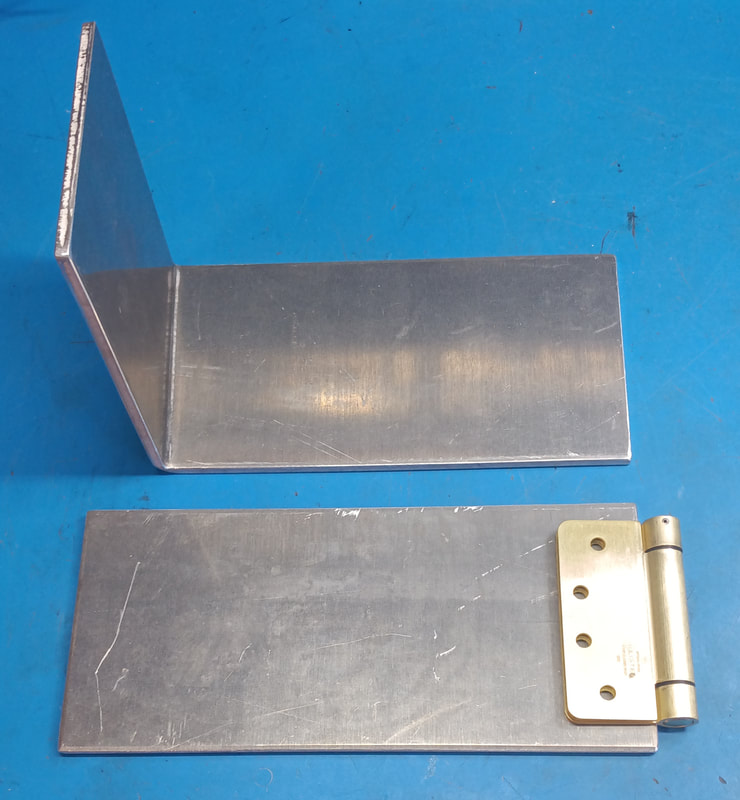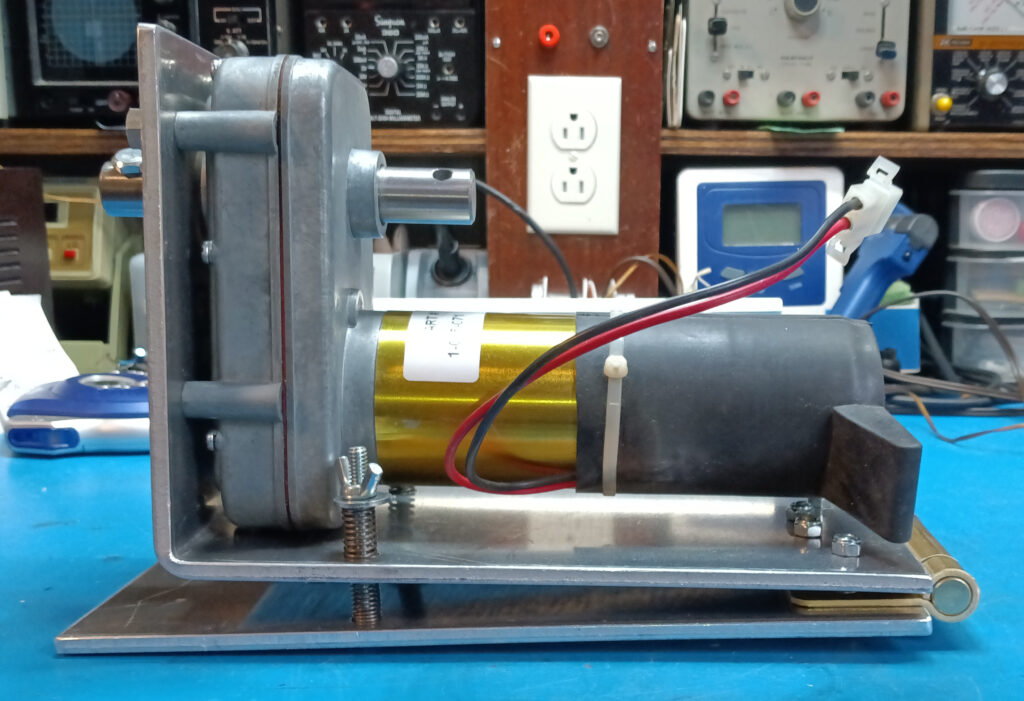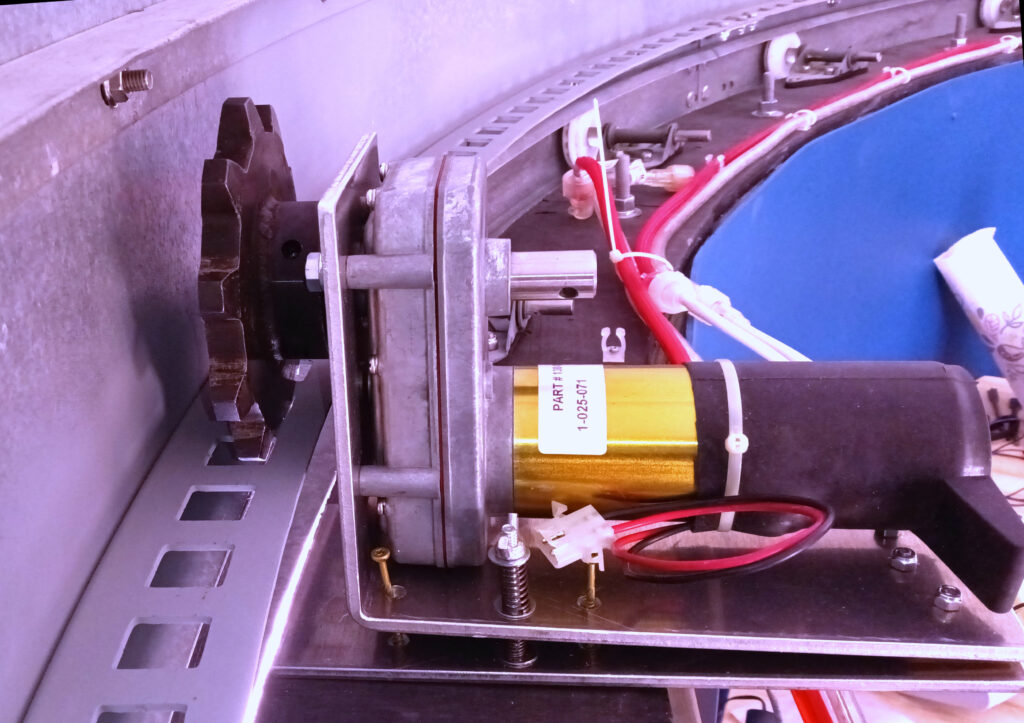My Exploradome observatory featured a DIY motor drive setup controlled through a software program called Lesvedome. It worked well enough and I want to do basically the same DIY solution with my new dome, except without the Lesvedome software itself, because it is a Windows only program. There are a couple of Linux-based software solutions that will do the job, it’s just a matter of testing them to see which I prefer. But first I need to build the new hardware.

The first task was building the azimuth drive. I had just the basic metal components for a simple motor mount made at a local metal fabrication shop, and I will drill and assemble the plates, and mount the motor. This is more or less the same style of motor mount Ash uses, but is made specifically for the gear motor I have. The hinge shown is a commercial-grade door hinge, which is much higher quality than typical cheap door hinges. I learned from my ExploraDome drive not to use a cheap hinge, because it rattled incessantly when the dome was in motion.

Drilling and assembling the mount is done, and the motor is bolted on. The two hinged plates are spring loaded, and all that’s left to do before running tests is bolting the mount onto the dome ring, and installing a drive sprocket on the motor shaft. Once it’s manually rotating the dome I’ll need to make a gray coder for integrating it with the motor driver circuit.

The motor drive is now installed. It was tested using a 12-Volt 8-Amp gel cell battery, and the drive is actually working better than I hoped. It draws less then 5-amps while rotating the dome, plus the only noise is the hum of the motor and some from the sprocket teeth on the gear track, which is to be expected and of a level that is completely acceptable. The gear track rotates quite smoothly, even better than I remember with the Exploradome drive.
I was worried about motor torque possibly slamming the sprocket teeth into the track at every startup, but due to the slow speed of the gear ratio, plus the spring loading of the mount base, which allows it to give a little, it’s a non-issue. The spring loading is adjusted to just let the sprocket contact the track, but still allow a small amount of upward or downward movement as needed.
The dome completes a full rotation in approximately 3-1/4 minutes, which works out to be a rate of 1-foot per 4+ seconds.
Page last updated 4/12/2025
